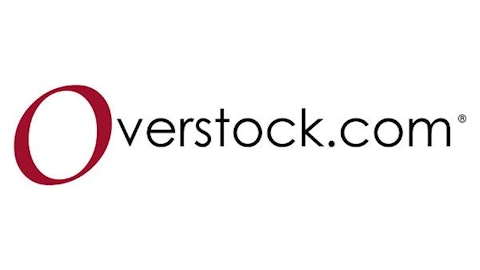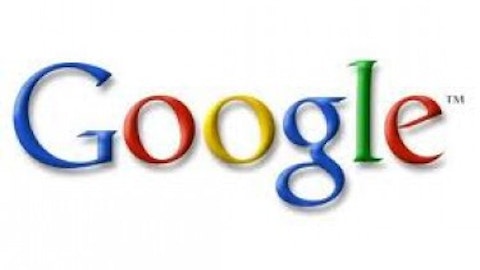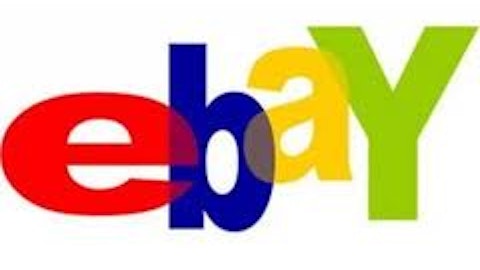
Yet a direct comparison of eBay Inc (NASDAQ:EBAY) against Amazon.com, Inc. (NASDAQ:AMZN) wouldn’t be fair, considering that the former is an auction and consumer-to-consumer site whereas the latter is an e-commerce superstore. Investors, however, still tend to be much more forgiving when Amazon misses top or bottom-line estimates.
Earnings come up short
When eBay Inc (NASDAQ:EBAY) reported its second quarter earnings on July 18, shares plunged nearly 7%.
The company reported non-GAAP adjusted earnings of $0.63 per share, or $822 million, up 12.5% from $0.56 per share in the prior year quarter. Revenue rose 14% year-on-year to $3.9 billion. However, eBay’s earnings missed the consensus estimate by a penny, although its revenue topped the estimate of $3.89 billion. eBay’s top and bottom-line growth were actually quite stable compared to Amazon.com, Inc. (NASDAQ:AMZN)’s 36.9% decline in earnings and 21.9% growth in revenue last quarter.
Unfortunately, eBay Inc (NASDAQ:EBAY) spooked investors with its lackluster third quarter guidance, which called for earnings of $0.61 to $0.63 per share and revenue between $3.85 billion to $3.95 billion. Analysts had expected eBay to earn $0.65 per share on revenue of $3.97 billion.
Positive growth catalysts
During the second quarter, eBay’s most noteworthy growth was in three areas – PayPal, international sales, and mobile. PayPal’s user base grew 17% to 132 million and its total payment volume rose 24% to $43 billion. PayPal’s total revenue rose 20% to $1.6 billion, accounting for 41% of eBay’s top line. PayPal also expanded into six countries and signed agreements with over 50 merchant acquirers to use PayPal over Discover Financial’s payment network.
Meanwhile, eBay Inc (NASDAQ:EBAY)’s cross-border (international) trade came in at $11 billion, accounting for 22% of eBay’s total Enabled Commerce Volume (ECV). Lastly, eBay added three million new mobile customers during the quarter, growing its user base 90% year-on-year, representing positive growth potential in the critical segment of shoppers more frequently using smartphones and tablets to shop.
Despite that solid growth, it’s clear that investors were spooked by its earnings miss and weak guidance. Therefore, I think it’s interesting to see how eBay’s growth compares to some of its overseas equivalents.
MercadoLibre’s murky forex problems
One of eBay’s biggest overseas investments is its 19.5% stake in Mercadolibre Inc (NASDAQ:MELI), commonly referred to as the “eBay of Latin America.” Last quarter, Mercadolibre Inc (NASDAQ:MELI) reported an 11% decline in earnings on a 22.7% gain in revenue. MercadoLibre also has more robust margins than eBay Inc (NASDAQ:EBAY) and Amazon, as seen in the following chart.
However, MercadoLibre’s biggest challenge is balancing out its business growth across 13 Latin American countries, many of which have been hit by inflation that have distorted revenue growth. In particular, revenue from Venezuela and Argentina, which are experiencing hyperinflation yet report revenue at official exchange results, can be misleading.
For example, Venezuela, which accounted for 15% of Mercadolibre Inc (NASDAQ:MELI)’s top line last year, has enacted currency controls that prevent businesses from obtaining U.S. dollars, and commercial forex transactions value the bolivar at 75% less than the official exchange rate. A similar problem is also emerging in Argentina, which accounts for 25% of the company’s revenue.
This has led some analysts, such as Off Wall Street Consulting Group’s Mark Roberts, to speculate that MercadoLibre’s 2012 earnings should have been 20% lower if it reported revenue “at market” rather than the distorted official forex rates. Yet other analysts believe that the fear is overblown. JPMorgan analyst Andre Baggio stated that the devaluation of the Venezuelan bolivar and the Argentine peso would only impact its top-line growth by 8%.
Despite these concerns, MercadoLibre’s stock has risen more than 40% over the past twelve months, trading at a feverish 47 times trailing earnings. It’s clear that investors still expect big things from this sprawling e-commerce giant that dominates some of the fastest growing economies in the world.
The rising dragon of the East
E-commerce is one of the hottest businesses in China, yet it is one that Amazon and eBay Inc (NASDAQ:EBAY) have failed to scratch. eBay attempted to break into the market in 2003 by acquiring EachNet.com, the country’s dominant consumer-to-consumer website, and managed to reduce its 90% market share to 10% before it sold it. Amazon entered China by acquiring online bookstore Joyo.com in 2004, but hasn’t had much more success than eBay – recent reports state that Amazon’s Chinese market share is at less than 1%.
eBay and Amazon both ran into a brick wall in China – Internet giant Alibaba Group, which owns Taobao, the country’s largest consumer-to-consumer (C2C) site, and Tmall, the largest business-to-consumer (B2C) site. Alibaba controls 95% and 44% of the C2C and B2C markets, respectively, making it extremely tough for any competitors, domestic or foreign, to compete. Alibaba also uses its own payment platform, Alipay, which is similar to eBay’s PayPal, across its e-commerce sites.
Last quarter, Alibaba’s earnings more than tripled to $669 million and revenue surged 71% to $1.4 billion – numbers that should make Amazon and eBay blush and get investors excited about its upcoming IPO.
The Foolish bottom line
Although eBay Inc (NASDAQ:EBAY) lacks Amazon’s exciting technologies, MercadoLibre’s high exposure to emerging markets, or Alibaba’s incredible top and bottom-line growth in the world’s most populous nation, it is still a robust investment in my book. eBay is trading at a much more reasonable forward P/E of 16.6, compared to Amazon’s ratio of 95.9 and MercadoLibre’s 30.3.
I believe that eBay got ahead of itself when it offered its lofty two year projections back in March, but its long-term growth potential is still intact. I also expect PayPal’s importance as a mobile payment platform to become more apparent over the next few quarters, as more merchants adopt it as an alternative payment method to credit cards. In other words, I believe that this is a classic case where long-term investors should buy the dips as myopic ones panic.
The article It’s Time To Stop Worrying About This E-Commerce Giant originally appeared on Fool.com and is written by Leo Sun.
Leo Sun has no position in any stocks mentioned. The Motley Fool recommends Amazon.com, eBay, and MercadoLibre. The Motley Fool owns shares of Amazon.com, eBay, and MercadoLibre. Leo is a member of The Motley Fool Blog Network — entries represent the personal opinion of the blogger and are not formally edited.
Copyright © 1995 – 2013 The Motley Fool, LLC. All rights reserved. The Motley Fool has a disclosure policy.







